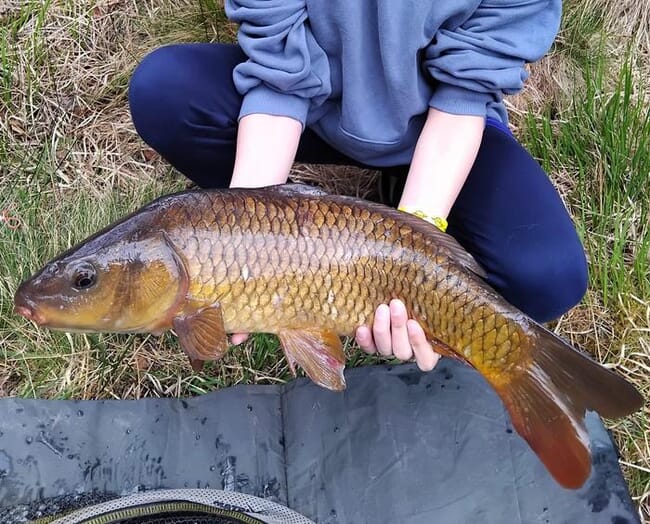
© Bournemouth University
Common carp that are bred in aquaculture farms and stocked into recreational fisheries show much lower chronic stress levels than their wild counterparts that never see an angler’s hook, according to a new study published in Plos One.
The research, led by professor Robert Britton of Bournemouth University, compared cortisol concentrations in fish scales – a reliable marker of chronic stress – in hatchery-reared carp versus wild populations. Cortisol accumulates in fish scales over time and offers a non-invasive way to assess long-term stress exposure.
“Our results suggest that the fish that we considered could be most vulnerable to chronic stress from angling could instead be the most stress resilient. This is reassuring that fish welfare in fisheries based on hatchery-reared fish might not be compromised by their regular angling capture,” said professor Britton in a press release.
Although previous research by the team has revealed associations between the amount of cortisol found in a fish’s scales and the vulnerability of fish to angling capture, this study was the first to compare scale cortisol levels of hatchery-reared carp against wild carp.
Data from domesticated carp in five recreational fisheries was compared with data from five wild populations. Although some wild carp had scale cortisol concentrations in the range of the domesticated carp, most wild carp had substantially higher scale cortisol - in some cases, well over ten times the concentration. So, despite their regular angling exploitation, the domesticated carp had much lower levels of chronic stress than those in the wild.
The authors believe these differences in stress resilience relate to the domestication of carp producing strains with traits that include resilience to chronic stressors, coupled with their presence in fisheries where there is an abundance of food available from angling baits. The wild carp might also be more active, for example through searching for food, which could elevate their general cortisol levels.
Co-author Dr Josephine Pegg of the South African Institute for Aquatic Biodiversity added, “Recreational fisheries provide significant socioeconomic value worldwide, but it’s important to recognise that the animals at the heart of these systems also deserve consideration and care. I’m pleased this work helps advance our understandings around the welfare of fish used in angling.”
However, the authors caution that despite the apparent resilience of their fish to chronic stress, fishery managers should continue to apply a range of welfare metrics to safeguard their fish, including monitoring disease levels and water quality, especially during the current period of warm weather.



